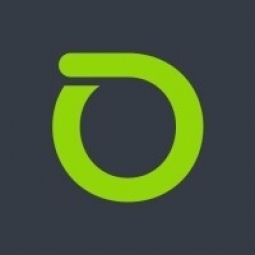公司规模
Large Corporate
地区
- America
国家
- United States
产品
- NETSCOUT vSTREAM Virtual Appliance
- nGeniusONE Service Assurance platform
- InfiniStreamNG appliances
技术栈
- Virtual Server Environment
- Private Data Center
实施规模
- Enterprise-wide Deployment
影响指标
- Productivity Improvements
- Customer Satisfaction
技术
- 基础设施即服务 (IaaS) - 私有云
适用行业
- 医疗保健和医院
适用功能
- 维护
用例
- 远程资产管理
- 预测性维护
服务
- 系统集成
- 云规划/设计/实施服务
关于客户
这家拥有百年历史的非营利性组织是美国领先的医疗保健提供商,为成员医院、医疗中心和团体诊所提供医疗保险和医疗保健服务,满足社区的需求。除了运营一级创伤中心和多家医院外,其 1,200 多名医生和 15,000 名全职员工每年在 40 多个专业领域为数百万入院和门诊患者提供卓越的护理,包括心脏病学、神经病学、骨科、肿瘤学等。他们将教学和研究作为其服务的基石,被视为一流的学术医疗中心。
挑战
该医疗机构遇到了放射学应用程序速度变慢的问题,影响了患者。医生和护士在调出心脏病图像时要等待长达 20 分钟。这些心脏病图像对于患者检查期间的评估和诊断至关重要。鉴于心脏病学实践的性质,几分钟可能意味着生死之间的差别。放射信息系统 (RIS) 利用 DICOM 协议(医学数字成像和通信)进行通信,负责文件传输、文档存储以及医生如何访问相关患者的正确放射图像。为了在几周内对问题进行分类,医疗机构的 IT 人员以及第三方供应商(包括应用程序提供商)进行了多次作战室通话。有时,每天有多达 20 人参加通话,试图查明问题的根源。由于每个供应商都试图证明不是他们所在的环境导致了速度变慢,因此浪费了大量时间。
解决方案
该医疗保健公司已在其私有数据中心、附属医院和医疗大楼中使用 NETSCOUT 解决方案。nGeniusONE 服务保障平台、各种 InfiniStreamNG 设备和 nGenius 3900 系列数据包流交换机已部署在私有云和医院位置,以实现可视性。放射科应用程序托管在私有云中的虚拟化服务器上,过去,该服务器缺乏可与整体服务保障监控解决方案互操作的可视性功能。网络运营建议实施 vSTREAM 虚拟设备来监控多个虚拟化放射科应用服务器中的线路日期,以将自适应服务智能™ (ASI) 智能数据发送到现有的 nGeniusONE 平台。从战略上讲,这为 IT 团队提供了全面、独立于供应商的端到端可视性和服务保障,以应对放射科等影响患者的服务。网络运营团队与应用程序团队合作研究了这个问题。 nGeniusONE 分析私有数据中心的 InfiniStreamNG 设备中的 ASI 信息后,IT 团队之前得出结论,网络不是问题的根源。利用 nGeniusONE 的 HL7(健康级别 7)服务监视器进行深入分析后,他们还排除了互操作性问题。
运营影响
数量效益

Case Study missing?
Start adding your own!
Register with your work email and create a new case study profile for your business.
相关案例.

Case Study
Hospital Inventory Management
The hospital supply chain team is responsible for ensuring that the right medical supplies are readily available to clinicians when and where needed, and to do so in the most efficient manner possible. However, many of the systems and processes in use at the cancer center for supply chain management were not best suited to support these goals. Barcoding technology, a commonly used method for inventory management of medical supplies, is labor intensive, time consuming, does not provide real-time visibility into inventory levels and can be prone to error. Consequently, the lack of accurate and real-time visibility into inventory levels across multiple supply rooms in multiple hospital facilities creates additional inefficiency in the system causing over-ordering, hoarding, and wasted supplies. Other sources of waste and cost were also identified as candidates for improvement. Existing systems and processes did not provide adequate security for high-cost inventory within the hospital, which was another driver of cost. A lack of visibility into expiration dates for supplies resulted in supplies being wasted due to past expiry dates. Storage of supplies was also a key consideration given the location of the cancer center’s facilities in a dense urban setting, where space is always at a premium. In order to address the challenges outlined above, the hospital sought a solution that would provide real-time inventory information with high levels of accuracy, reduce the level of manual effort required and enable data driven decision making to ensure that the right supplies were readily available to clinicians in the right location at the right time.

Case Study
Gas Pipeline Monitoring System for Hospitals
This system integrator focuses on providing centralized gas pipeline monitoring systems for hospitals. The service they provide makes it possible for hospitals to reduce both maintenance and labor costs. Since hospitals may not have an existing network suitable for this type of system, GPRS communication provides an easy and ready-to-use solution for remote, distributed monitoring systems System Requirements - GPRS communication - Seamless connection with SCADA software - Simple, front-end control capability - Expandable I/O channels - Combine AI, DI, and DO channels

Case Study
Driving Digital Transformations for Vitro Diagnostic Medical Devices
Diagnostic devices play a vital role in helping to improve healthcare delivery. In fact, an estimated 60 percent of the world’s medical decisions are made with support from in vitrodiagnostics (IVD) solutions, such as those provided by Roche Diagnostics, an industry leader. As the demand for medical diagnostic services grows rapidly in hospitals and clinics across China, so does the market for IVD solutions. In addition, the typically high cost of these diagnostic devices means that comprehensive post-sales services are needed. Wanteed to improve three portions of thr IVD:1. Remotely monitor and manage IVD devices as fixed assets.2. Optimizing device availability with predictive maintenance.3. Recommending the best IVD solution for a customer’s needs.

Case Study
HaemoCloud Global Blood Management System
1) Deliver a connected digital product system to protect and increase the differentiated value of Haemonetics blood and plasma solutions. 2) Improve patient outcomes by increasing the efficiency of blood supply flows. 3) Navigate and satisfy a complex web of global regulatory compliance requirements. 4) Reduce costly and labor-intensive maintenance procedures.

Case Study
Cloud-based healthcare solution for Royal Philips
Royal Philips wanted to launch its cloud-based healthcare solution HealthSuite Digital Platform in China to deliver services to help cope with challenges related to urbanization and population growth. Philips wanted to achieve this goal by combining mobile, cloud computing and big data technologies. To bring this platform and product to market, Philips required cloud computing and local technical service capabilities in China, in addition to a flexible IT infrastructure that could handle user requests.








